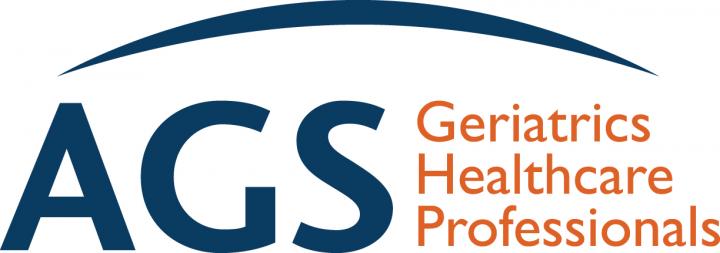
Credit: (C) 2019, American Geriatrics Society
The pipeline of research supporting care as we age is about to look a bit more like the country it serves–and for good reason. Beginning this year, the National Institutes of Health (NIH), America’s premier institution for medical research, will for the first time in its history require NIH-funded scholars to eliminate arbitrary age limits in their work, age limits that previously allowed for excluding groups like older people without just cause. A series of articles recently published in the Journal of the American Geriatrics Society (JAGS) explores how the change came to fruition–in large part thanks to advocacy from organizations like the American Geriatrics Society (AGS) and its member experts–and why the change matters, particularly in a world where living longer is possible thanks to past breakthroughs originating at the NIH.
“Clinical research, much of it championed by NIH scientists, has made increased longevity with less morbidity a tangible reality,” said William Dale, MD, PhD, one of the co-authors for an article describing the policy change. “To keep up that momentum, we need greater attention to age in current and future scholarship. We all have unique physiological changes and medical care needs as we get older, and the insights we gain working with older people today will teach us how to be healthier tomorrow.”
Effective as of Jan. 25, the new NIH “Inclusion Across the Lifespan” policy supports research involving traditionally underrepresented age groups–specifically older people and children–by requiring approved justifications before any study participants can be excluded from NIH-funded work based on age alone. The policy also advocates for sensitivity in the language used to describe older adults, stressing the importance of building “respect and understanding” beginning with how we describe older participants in clinical research.
In an editorial authored by AGS representatives and published in JAGS (DOI: 10.1111/jgs.15784), geriatrics experts describe how influential stakeholders like the AGS worked closely with the NIH to ensure older adults would have more of a presence in future government-funded health scholarship.
“In workshops and comments submitted to NIH, we stressed that excluding trial participants based on arbitrary age restrictions complicates research and jeopardizes findings that could help those most likely to experience a disease or condition,” noted Cathleen Colon-Emeric, MD, MHS, co-author of the editorial. “We believe this new policy represents an opportunity for geriatrics researchers to develop better care for all our needs as we age.”
To support these mandates, the AGS authors advocate leading the charge by:
- Making use of new and better data about older people to conduct deeper and more extensive analyses of treatments and interventions.
- Helping colleagues across health care understand how to engage older adults in aging research. A related editorial in JAGS (DOI: 10.1111/jgs.15785), for example, describes a framework for supporting the inclusion of older adults in research by helping scientists pivot to specific priorities for recruiting older participants.
- Advocating for older adults. The Inclusion Across the Lifespan policy advocates a paradigm shift from protecting vulnerable individuals “from research” to protecting them “through research.” AGS authors emphasized the importance of doing so by acknowledging that underrepresenting older adults and other groups in research studies can result in “unsafe and inappropriate care decisions” based on incomplete data.
- Developing infrastructure and resources for review boards, research centers, and even individual researchers to adopt more inclusive practices–and more inclusive terminology–for older adults.
The new policy comes at a critical juncture. Even as older adults become one of the U.S.’s largest age groups, research still lags behind shifting demographics. A study conducted by colleagues from the National Institute of Aging (a division of the NIH) (DOI: 10.1111/jgs.15786), for example, examined the adequacy of age inclusivity in NIH-funded “Phase III” trials (so named because they are among the final stages of research regarding the safety and efficacy of treatments). Looking at work published from 1965 to 2015, the team determined that more that 33% of studies had upper-age limits, and that 25% of these studies specifically excluded people 65-years-old and older. Findings are even more stark for certain conditions common with age: More than 70% of trials for abnormal heartbeat, coronary atherosclerosis (build-up of fatty deposits in the coronary artery), heart attack, COPD (an umbrella term for progressive lung diseases), and lung cancer excluded people over 75.
“Advances in health and medicine aren’t just about discovering new treatments; they’re also about uncovering how those treatments improve health, safety, and independence for unique individuals–including older adults,” concluded Camille Vaughan, MD, MS, one of the authors on the AGS editorial. “The NIH is taking an important step toward ensuring research reflects reality. Groups like the AGS and its members are excited to be among the first to chart that new frontier.”
AGS ACTION POINTS
- Beginning this year, the NIH will require funded scholars to eliminate arbitrary age limits in their work, which previously allowed for excluding people like older adults without scientific justification.
- In an editorial authored by AGS representatives, geriatrics experts describe how important stakeholders worked with the NIH to ensure that older adults would have more of a presence in future research.
- Geriatrics experts can help lead the charge for age inclusivity by working to (1) expand the knowledge base related to health in aging, (2) educate other disciplines about the needs of older study subjects, (3) advocate for older adults based on new findings, and (4) develop infrastructure and resources to affect change.
###
About the American Geriatrics Society
Founded in 1942, the American Geriatrics Society (AGS) is a nationwide, not-for-profit society of geriatrics healthcare professionals that has–for more than 75 years–worked to improve the health, independence, and quality of life of older people. Our nearly 6,000 members include geriatricians, geriatric nurses, social workers, family practitioners, physician assistants, pharmacists, and internists. The Society provides leadership to healthcare professionals, policymakers, and the public by implementing and advocating for programs in patient care, research, professional and public education, and public policy. For more information, visit AmericanGeriatrics.org.
Media Contact
Daniel E Trucil
[email protected]
212-822-3589
Original Source
https:/
Related Journal Article
http://dx.




